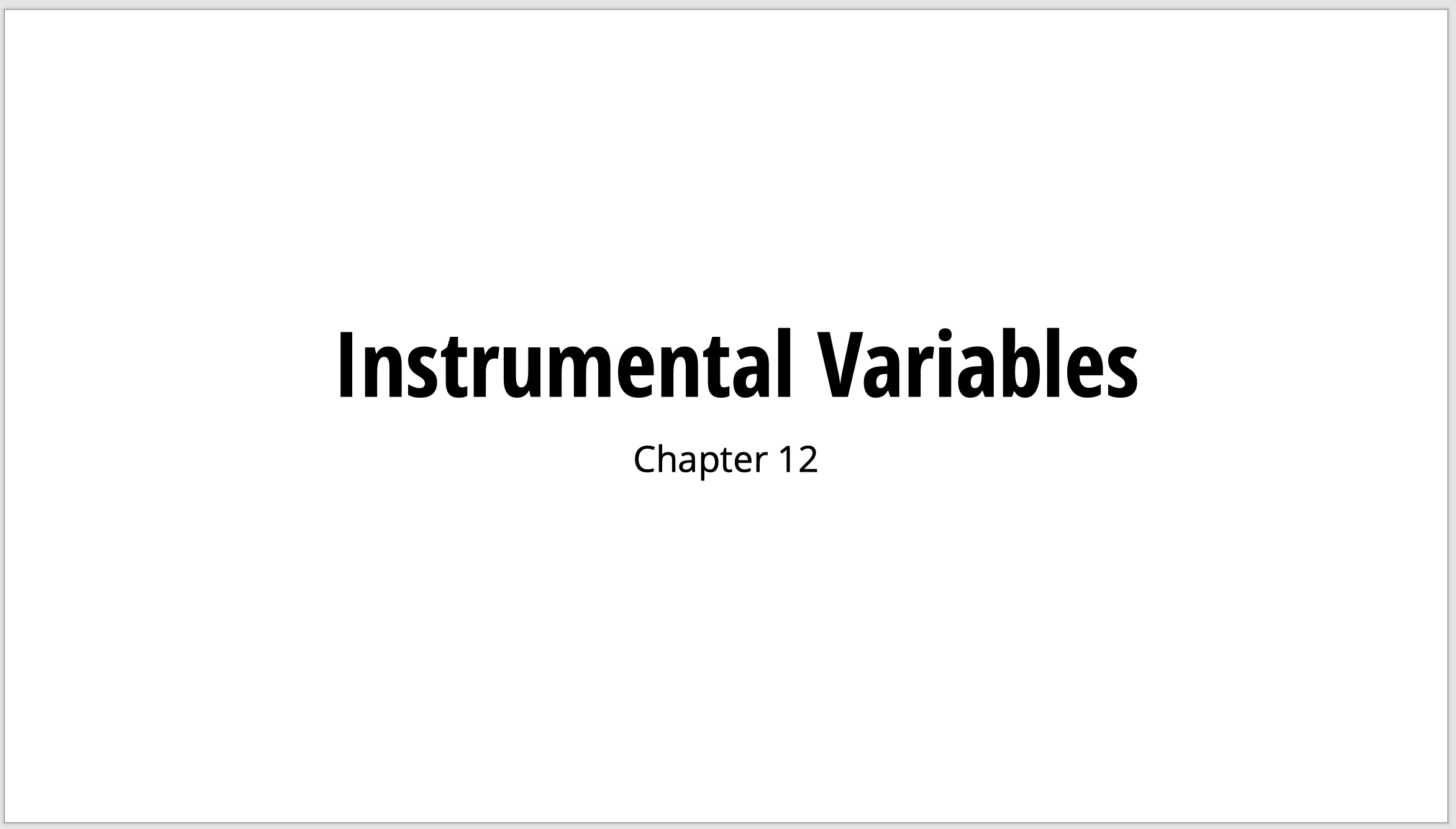Week 13 - Instrumental Variables
Overview
Let’s wrap up with a final hurrah - one more empirical tool to help us identify causal impacts.
Reading Guide
SW 12.1 The IV Estimator with a Single Regressor and a Single Instrument
Make sure you understand the difference between endogeneous variables (correlated with error term
I find the derivation (in the text and video) helpful, but it’s not something I’d test you on.
(Gleefully rubs hands together while searching twitter for “@Alex_peys rainfall meme”) pic.twitter.com/HV0DNKOUKw
— ⑆Luke Stein⑈ (@lukestein) August 26, 2020
SW 12.2 The General IV Regression Model
Now we get a bit technical. The key important things here are the understanding of two-stage least squares - what it is and how it works, plus a good understanding of those assumptions.
SW 12.3 Checking Instrument Validity
Make sure you know what a weak instrument is, why it’s a problem, and how we identify it. Make sure you understand the logic behind whether an instrument violates it’s exogeneity assumption.
— Daniel Millimet (@dlmillimet) December 3, 2021
Real footage of an economist checking whether his IV assumptions hold uppic.twitter.com/qK1EvB11En
— Khoa Vu (@KhoaVuUmn) August 19, 2021
Skip the test of overidentifying restrictions
Other resources
Getting your head around IV can be tricky! Here are a few resources if you want to get another take:
- Rebecca Barter: Understanding nstrumental variables: Helpful diagrams!
- Pierre-Louis Vézina:Instrumental Variables - an intuitive guide: Overview plus a few more examples of IVs in the literature
- Nick Huntington-Klein has the best econometrics resources 🔥 🔥.
- Check out his lecture slides on instrumental variables, an accompanying video lecture here.
- Also, some fancy animations to show what IV actually does w/ data
